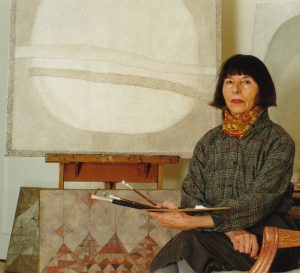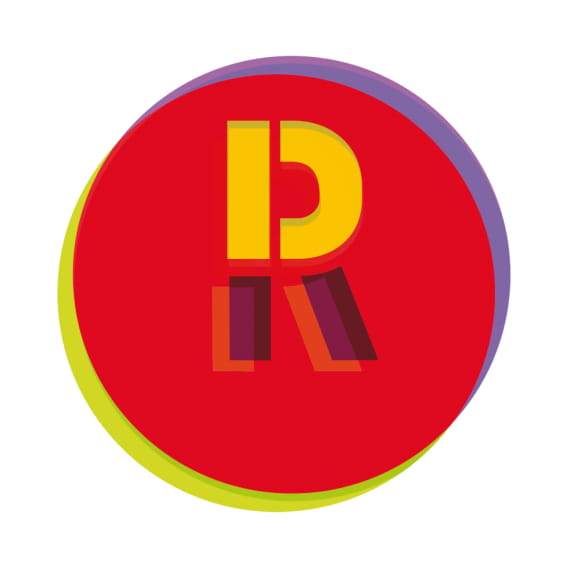Arika Madeyska (1920-2004)

Arika Madeyska at the Zaleski Foundation, Warsaw 1999. Artist’s family archives
Arika Madeyska was born in 1920 in Warsaw, into a noble and intelligentsia family with patriotic traditions (her father, Wladyslaw Lubicz-Orlowski was an agricultural engineer and during the 2nd World war an active member of AK – the Home Army, a large scale resistance movement fighting the Nazis during the war). In 1953, Madeyska graduated from the National School of Fine Arts in Sopot, where she studied painting under Artur Nacht-Samborski and Jacek Zulawski. There, she met her first husband, Roman Poray-Madeyski, assistant in the mural painting department. Shortly after Madeyska finished her studies, the couple settled in Warsaw where they quickly became involved in the bohemian life. In Warsaw, Madeyska began her artistic career and she gained recognition both from the public and the critics, as well as from the official institutions that have awarded her numerous prizes even if she refused to abide by the socialist realist style, preferring to create in her own pictorial language. Madeyska started to exhibit and win prizes at the end of the 1950s: her first solo exhibition took place in 1959 at the New Culture Salon in Warsaw. As she said “I worked a lot and I painted all the time. I was quite well known. I was invited to all the exhibitions, I received prizes, museums were buying my paintings and even some people did. I was promoted without seeking it, it just happened like that”.
However, despite this success – but also, among other reasons, because of personal problems – Madeyska decided to settle permanently in Paris in 1966. The first years in the capital were very difficult as the artist lived in great poverty. However, after a while, her situation improved thanks to the help of other Polish immigrants – both from artistic circles and those from “Kultura” – but also thanks to her artistic talents. Indeed, Madeyska became a restorer and started to work for Joanna Wierusz-Kowalska (thanks to her, she participated in the restoration of Fontainebleau’s frescoes), and later she was self-employed. Since 1972 – when she married Jacob Carlo and gained the freedom of movement, which she was deprived for a long time because the Communist authorities had revoked her passport – she traveled a lot around the world. At that time, she started to exhibit once again: before, her career as a painter suffered because of her difficult economic situation and the subsequent need to work, which didn’t allow her to concentrate on her artistic research.
In 1991, Madeyska reestablished contact with her country and started to exhibit there once again. She died in Paris in 2004.
During her life, Madeyska’s style underwent many changes: she went from figurative cityscapes to abstract paintings with geometric elements, dominated at first by the lines similar to those of some of Mondrian’s works. Later on, they started becoming more and more rounded evolving finally into the circles. However, despite those changes, all throughout her life, Madeyska stayed focused on small formats and subtle, discreet colors. Her works were exhibited in many galleries around the world, e.g. in Japan, Brazil, Switzerland, Slovenia, and United States. She has won numerous national and international awards.
